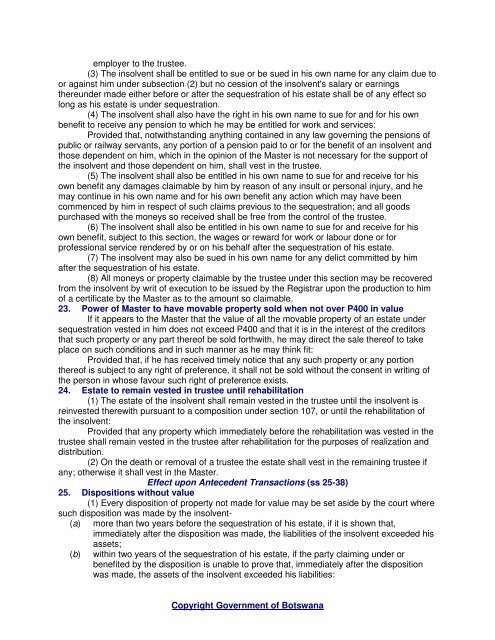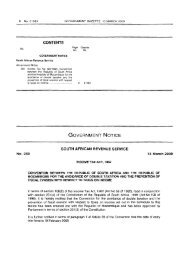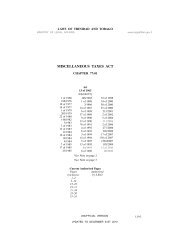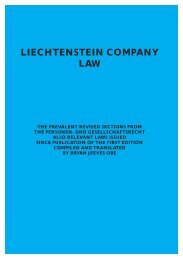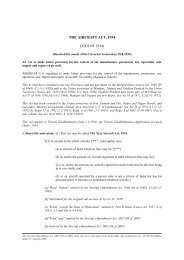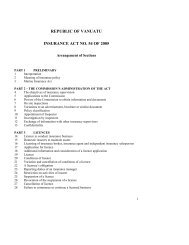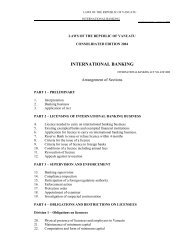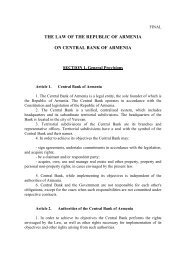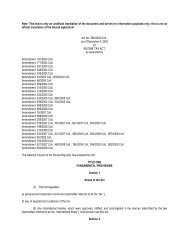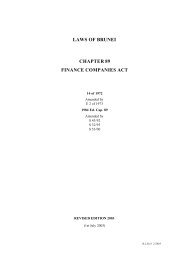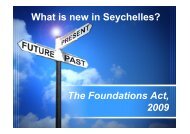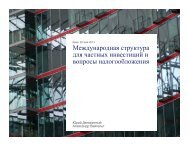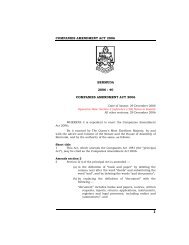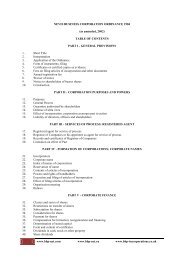Insolvency Act.pdf - Intax Info
Insolvency Act.pdf - Intax Info
Insolvency Act.pdf - Intax Info
Create successful ePaper yourself
Turn your PDF publications into a flip-book with our unique Google optimized e-Paper software.
employer to the trustee.<br />
(3) The insolvent shall be entitled to sue or be sued in his own name for any claim due to<br />
or against him under subsection (2) but no cession of the insolvent's salary or earnings<br />
thereunder made either before or after the sequestration of his estate shall be of any effect so<br />
long as his estate is under sequestration.<br />
(4) The insolvent shall also have the right in his own name to sue for and for his own<br />
benefit to receive any pension to which he may be entitled for work and services:<br />
Provided that, notwithstanding anything contained in any law governing the pensions of<br />
public or railway servants, any portion of a pension paid to or for the benefit of an insolvent and<br />
those dependent on him, which in the opinion of the Master is not necessary for the support of<br />
the insolvent and those dependent on him, shall vest in the trustee.<br />
(5) The insolvent shall also be entitled in his own name to sue for and receive for his<br />
own benefit any damages claimable by him by reason of any insult or personal injury, and he<br />
may continue in his own name and for his own benefit any action which may have been<br />
commenced by him in respect of such claims previous to the sequestration; and all goods<br />
purchased with the moneys so received shall be free from the control of the trustee.<br />
(6) The insolvent shall also be entitled in his own name to sue for and receive for his<br />
own benefit, subject to this section, the wages or reward for work or labour done or for<br />
professional service rendered by or on his behalf after the sequestration of his estate.<br />
(7) The insolvent may also be sued in his own name for any delict committed by him<br />
after the sequestration of his estate.<br />
(8) All moneys or property claimable by the trustee under this section may be recovered<br />
from the insolvent by writ of execution to be issued by the Registrar upon the production to him<br />
of a certificate by the Master as to the amount so claimable.<br />
23. Power of Master to have movable property sold when not over P400 in value<br />
If it appears to the Master that the value of all the movable property of an estate under<br />
sequestration vested in him does not exceed P400 and that it is in the interest of the creditors<br />
that such property or any part thereof be sold forthwith, he may direct the sale thereof to take<br />
place on such conditions and in such manner as he may think fit:<br />
Provided that, if he has received timely notice that any such property or any portion<br />
thereof is subject to any right of preference, it shall not be sold without the consent in writing of<br />
the person in whose favour such right of preference exists.<br />
24. Estate to remain vested in trustee until rehabilitation<br />
(1) The estate of the insolvent shall remain vested in the trustee until the insolvent is<br />
reinvested therewith pursuant to a composition under section 107, or until the rehabilitation of<br />
the insolvent:<br />
Provided that any property which immediately before the rehabilitation was vested in the<br />
trustee shall remain vested in the trustee after rehabilitation for the purposes of realization and<br />
distribution.<br />
(2) On the death or removal of a trustee the estate shall vest in the remaining trustee if<br />
any; otherwise it shall vest in the Master.<br />
Effect upon Antecedent Transactions (ss 25-38)<br />
25. Dispositions without value<br />
(1) Every disposition of property not made for value may be set aside by the court where<br />
such disposition was made by the insolvent-<br />
(a) more than two years before the sequestration of his estate, if it is shown that,<br />
immediately after the disposition was made, the liabilities of the insolvent exceeded his<br />
assets;<br />
(b) within two years of the sequestration of his estate, if the party claiming under or<br />
benefited by the disposition is unable to prove that, immediately after the disposition<br />
was made, the assets of the insolvent exceeded his liabilities:<br />
Copyright Government of Botswana


